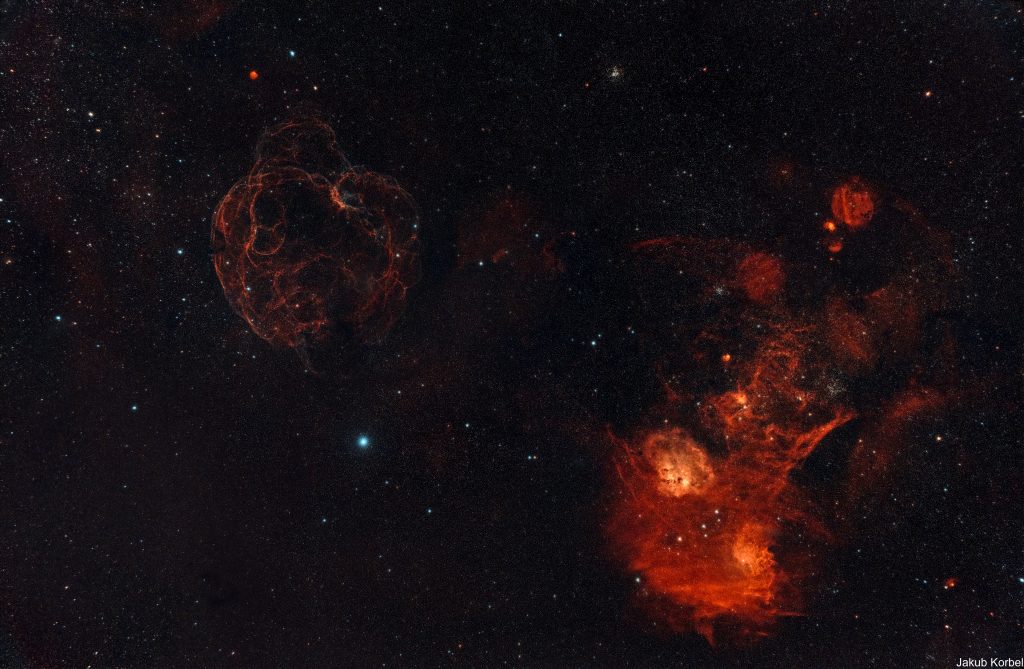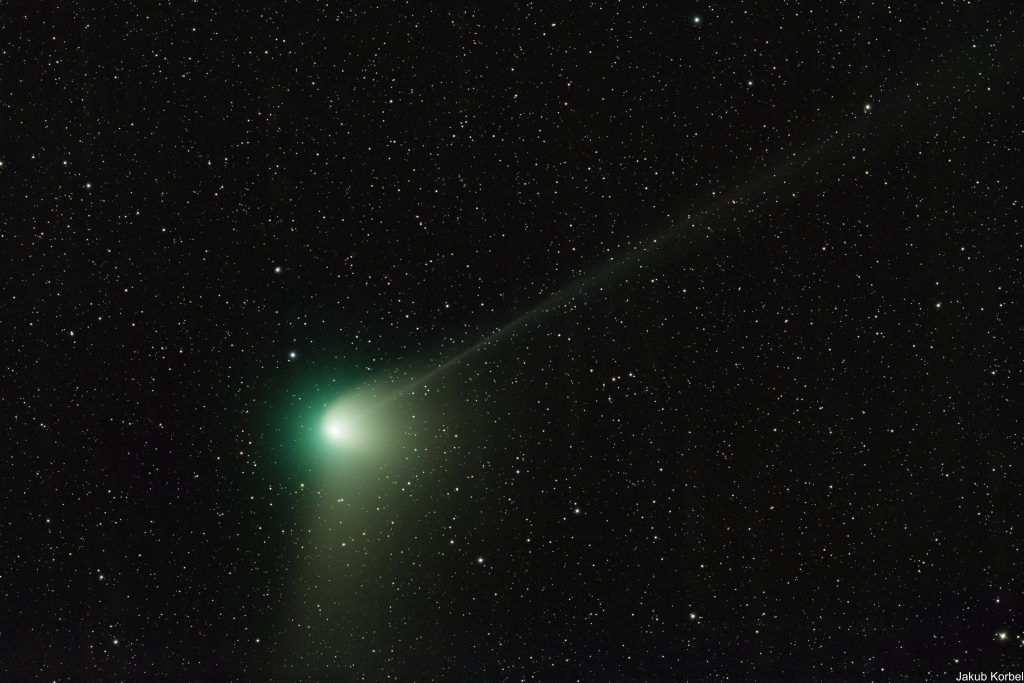The Spaghetti nebula (upper left corner) is a supernova remnant. This means, roughly 40’000 years ago, there was a massive star in the middle of the spherical conglomerate of filaments. The star ended its life in a spectacular explosion and turned into a new form – a pulsar. I knew from the beginning, that I would be chasing the ghost. Cosmic Spaghetti are a very dim nebula and to capture them one needs a wide-angle telescope, fast optics, narrow band filter, and a lot of patience. I didn’t use a telescope, but a lens Samyang 135 mm f 2.0 slowed down to f 2.8, combined with a brand new dual-narrow band Antlia filter, optimized for high-speed optics, and in total, I collected the photons for nearly 10 hours.
The much brighter nebula in the bottom right corner is called Flaming Star Nebula, cataloged under IC 405. Compared to the Spaghetti Nebula, which represents the death of the star, the Flaming Star Nebula represents the vital part of the life of the star AE Aurigae. This star radiates so strongly, that it excites surrounding hydrogen gas. Therefore it is called an emission nebula.
Visually not far away, the comet C/2022 E3 ZTF was passing around Mars, but I was not distracted by that, because I was concentrating to capture as many pictures of the Spaghetti as possible. Besides, I already captured this comet recently.

| Telescope | Samyang 135 mm f2.0 @ f2.8 |
| Aperture | 48 mm |
| Focal length | 135 mm |
| Mount | iOptron Skyguider Pro |
| Autoguiding | ZWO 178MM, QHY Mini Guide Scope 30/130 mm |
| Camera | ZWO ASI 6200 MC @-10 °C |
| Filters | Antlia Dualband High speed |
| Exposure | 113x300s, gain 100 |
| Date | 2023-02-12 |

